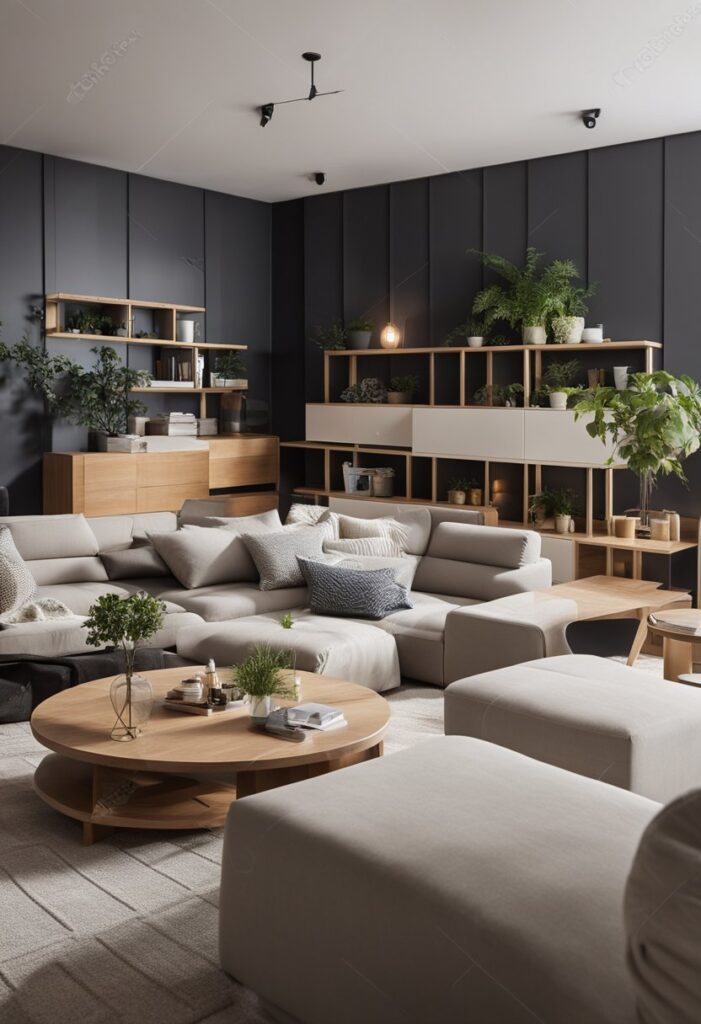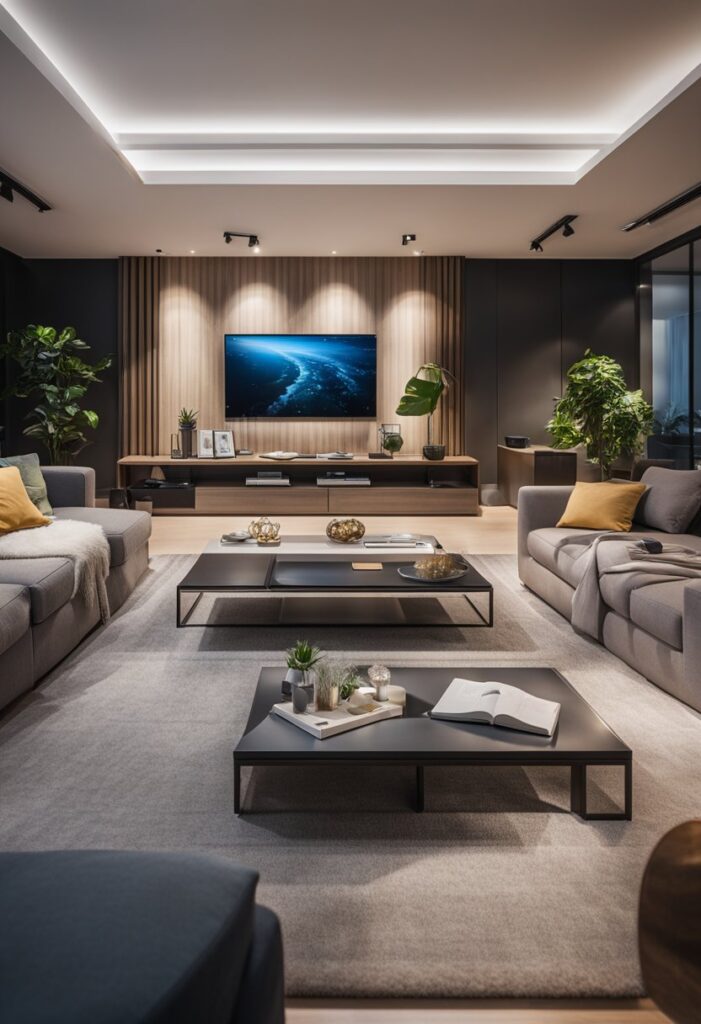Living Room Trends 2025: Fresh Ideas for Modern Style
As I look ahead to 2025, I’m excited to see how living room design continues to evolve. This year, earthy tones and bold colors are set to take center stage, creating spaces that feel both cozy and vibrant. Homeowners will shift from minimalistic designs to styles that embrace more dynamic and rich hues, such as deep greens and jewel tones.

In addition to color changes, I see a trend toward maximizing comfort and style in both large and small living areas. With a focus on warmth and organic materials, these spaces will blend functionality with a sense of home. Whether you prefer a cozy nook or a grand gathering place, there are plenty of ideas to inspire your living room in 2025.
By exploring these trends, I hope to provide you with insights that can help transform your living space into a place that reflects your personal style while keeping up with contemporary tastes.
Sustainable and Eco-Friendly Materials
Choosing sustainable and eco-friendly materials for a living room enhances comfort and promotes a healthy environment. I will explore three popular options: reclaimed wood, natural fibers, and recycled metals. Each material offers unique benefits while supporting a sustainable lifestyle.
Reclaimed Wood
Reclaimed wood comes from old buildings, barns, or other structures. This wood is rescued from being wasted, making it an excellent option for furniture and flooring.
Benefits include:
- Unique character: Each piece has a story, with distinct grains and colors.
- Environmental impact: It reduces demand for new lumber, helping to preserve forests.
- Durability: Often, reclaimed wood is stronger due to its age and is more resistant to wear.
I find using reclaimed wood adds warmth to any space while ensuring I make eco-friendly choices.
Natural Fibers
Natural fibers, like jute, cotton, and linen, are becoming more popular for upholstery and rugs. These materials are biodegradable and usually grown with fewer chemicals.
Advantages are:
- Breathability: Natural fibers let air circulate, keeping the living room comfortable.
- Aesthetics: Textures and colors from natural fibers can enhance the room’s look.
- Sustainability: Most natural fibers are sourced from renewable plants.
I appreciate how natural fibers create a cozy atmosphere while being good for the environment.
Recycled Metals
Recycled metals, such as aluminum and steel, are great for furniture, lighting, and décor. These metals reduce waste and lessen the need for new mining.
Key points include:
- Reusability: Recycled metals can be transformed into many different items.
- Strength: They are durable and resistant to rust, offering longevity.
- Modern appeal: Sleek, shiny metals can create a contemporary look in a living room.
Using recycled metals allows me to add a modern touch to my living space while supporting sustainability.
Smart Home Integration

Smart home integration is transforming living rooms into more comfortable and efficient spaces. This technology allows various devices to work together to enhance daily life. In this section, I will explore two key aspects: seamless technology and voice-activated systems.
Seamless Technology
Seamless technology means that different devices connect easily and work together without issues. I can control lights, music, and even the TV from one app on my smartphone. This integration saves time and improves convenience.
Smart TVs can link with speakers and smart lighting. For instance, when I sit down to watch a movie, the lights dim automatically, and the sound system adjusts for the best audio experience.
Key features of seamless technology include:
- Compatibility with multiple devices
- Centralized control through apps
- Easy setup without technical know-how
Having a living room equipped with seamless technology makes entertainment simple and enjoyable.
Voice-Activated Systems
Voice-activated systems are another exciting trend in smart home integration. With devices like Amazon Alexa or Google Assistant, I can control various functions just by speaking. This hands-free approach enhances convenience and comfort in my living space.
For example, I can ask my virtual assistant to play my favorite music, adjust the thermostat, or even control smart curtains. This feature is especially useful during gatherings or when my hands are full.
Benefits of voice-activated systems:
- Ease of use for all ages
- Customized routines for daily activities
- Increased accessibility for those with mobility challenges
Integrating voice-activated systems makes my living room smarter and more user-friendly.
Multifunctional Spaces

In 2025, homes are focusing on multifunctional spaces that enhance utility and comfort. These spaces are designed to adapt to various needs, making them perfect for modern living. Two popular elements in this trend are convertible furniture and built-in storage solutions.
Convertible Furniture
Convertible furniture is the star of multifunctional spaces. This type of furniture can easily change its shape or function. For example, a sofa can transform into a bed, perfect for guests.
Another great piece is the extendable dining table, which can be small for daily use but expands for larger gatherings.
Benefits of Convertible Furniture:
- Space-Saving: Great for small areas.
- Versatile Use: Adapts to different needs.
- Stylish Designs: Available in many styles to suit any decor.
Built-In Storage Solutions
Built-in storage is essential for keeping spaces organized and functional. These solutions blend with the room’s design, providing storage without taking up extra space.
I often see options like shelves and cabinets built into walls, which maximize every inch of space.
Key Features of Built-In Storage:
- Customizable: Can be designed to fit various items.
- Aesthetic Appeal: Adds charm while reducing clutter.
- Efficient: Keeps frequently used items accessible and neat.
With these features, multifunctional spaces offer comfort and style, making homes more adaptable to our busy lives.
Aesthetic Shifts
As I explore living room trends for 2025, I notice key aesthetic shifts occurring. These trends emphasize bold color palettes and a movement towards minimalist designs. Both these styles offer fresh and inviting ways to create comfortable spaces.
Bold Color Palettes
In 2025, bold color palettes will dominate living room designs. I’m seeing an exciting rise in vibrant jewel tones like deep greens, purples, and golds. These colors can easily transform a room into a warm and lively environment.
- Accent Walls: Using one bold color on an accent wall can create instant drama.
- Layering: I can combine different shades of the same color for a rich, layered look.
Additionally, mixing colors can add depth. Pairing vibrant tones with softer hues helps create balance. With these bold choices, the living room becomes not just a space, but a statement.
Minimalist Designs
While bold colors are gaining popularity, minimalist designs continue to hold their ground in 2025. The focus here is on simplicity and function. In this style, I find clean lines and open spaces are key.
- Curved Furniture: Soft, inviting shapes replace sharp angles, making living rooms feel more welcoming.
- Neutral Bases: Choosing neutral colors allows me to highlight select pieces, enhancing their appeal.
This approach creates a sense of calm. Too much clutter is avoided, encouraging relaxation. It’s about using less to achieve more, offering a serene retreat in my home.